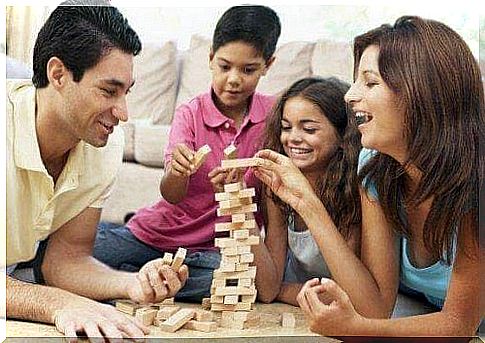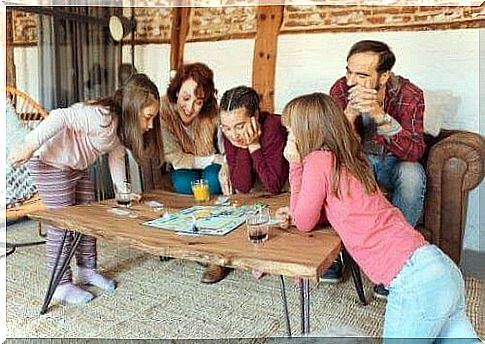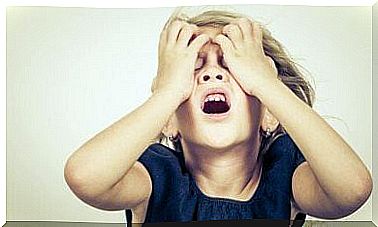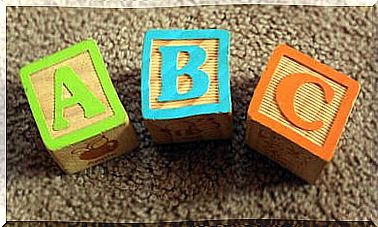Symbolic Thinking In Children: 6 Exercises

Symbolic thinking is essential for children to understand basic abstract concepts. These concepts are acquired through language.
Children begin to express themselves with symbolic ideas at around 18 months of age. In this regard, the clearest evidence of mental representations is known to be through language.
“On the whole, one can therefore say that in the course of mental development the differentiation between imitative accommodation and ludic assimilation gradually becomes narrower. They separate on the sensory-motor level; in the symbolic game earlier imitative images provide the “references”, and the ludic assimilation provides the meaning. “
-Jean Piaget-
As Piaget puts it above, a child’s growth is not measured solely by physical characteristics. The most complex processes to monitor are the child’s mental and sensory developments.
However, knowing the key steps in cognitive development will make it easier for you to support your children. In this way, you can help them appropriately and appropriately at every stage of their cognitive development.
The basis of symbolic thinking in children
It is obvious that children have started to develop their symbolic thinking when they can depict people, things and situations that are not present in their immediate surroundings.
In addition, children evoke symbols or internal images to represent their reality. This action shows that they perceive reality through abstract concepts.
How do I identify symbolic thinking in play and in communication?
When children play with a piece of wood and think of it as a sword, they demonstrate the ability to make abstract assumptions about real objects. As a result, children think through symbols when they imagine they are a superhero or a genius doctor.
Then when children use gestures and sounds to communicate and name things, they give meaning to their reality. Later, as children get older and can write and draw, they begin to use characters to narrow the world of concepts.

How do you develop symbolic thinking in children?
1. Role play
Immerse yourself in the world of role play by suggesting that your children are the parents and you are the child. Propose fun scenarios and start seeing your children mimic the behavior they want you to see.
You will fire their imagination and in this way create fantastic stories that will surprise you. You can also use costumes, masks and other items to make the game even more entertaining.
2. Develop symbolic thinking in children by doing household chores
In this type of game, you incorporate that part of the thinking that will help the child do simple household chores.
For example, invent games in which children can pretend to be cooks and help you prepare the food. First give them the quantities of ingredients, then ask them to count and name them.
This way, not only will you help develop their symbolic thinking, but you will also make them aware that they should get involved in the chores.
3. Promote syombolic thinking through simple board games
Snakes and ladders, ludo or monopoly are games that help children understand numerical concepts. Identifying characters, symbols, and images is also a huge step in the construction of symbols.
4. Puzzle and building blocks
The representation of objects with blocks or the construction of objects from small pieces also requires the development of mental images.
In addition, the imitation of figures that are not present in their immediate reality evokes the abstract concepts of symbolic thinking.
5. “I see what you don’t see”
This game is an ideal pastime for young children either at home or outdoors. It consists in providing a simple descriptive statement, for example, “I see something red.”
Your child should then tell you where an object with these characteristics is located. In this way you not only practice the perception of objects and backgrounds, but also promote the child’s cognitive skills.

6. Stories, puzzles and guessing games
Word games are great for kids when it comes to developing symbolic thinking. Words make children think in pictures, objects and stories.
When children let their imaginations run wild, they go to places that they create themselves. They explore places that embody and represent their vision of reality. Then word games can motivate your child to read and write.
As you start to use these simple games in your everyday family life, you will notice big leaps in development in your children. Your children will develop different dimensions at the same time as their knowledge and communication skills will also grow.
If you work on their linguistic development, this will also have an impact on the cognitive level and vice versa. Your child’s mind is a miraculous mechanism that responds to stimuli in a number of ways.









